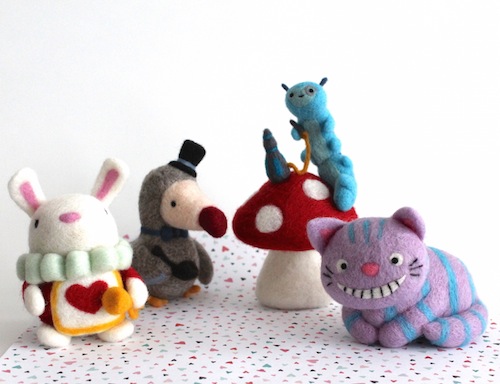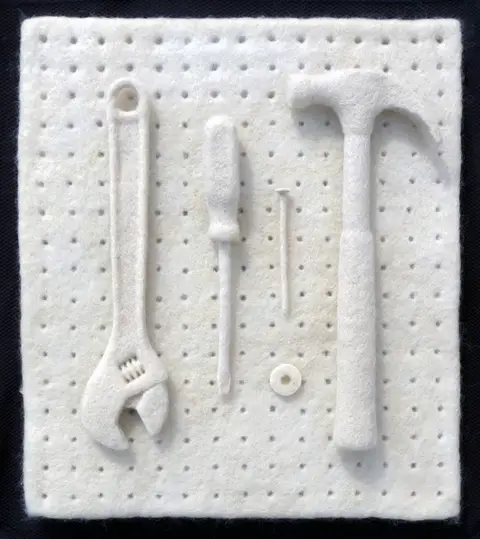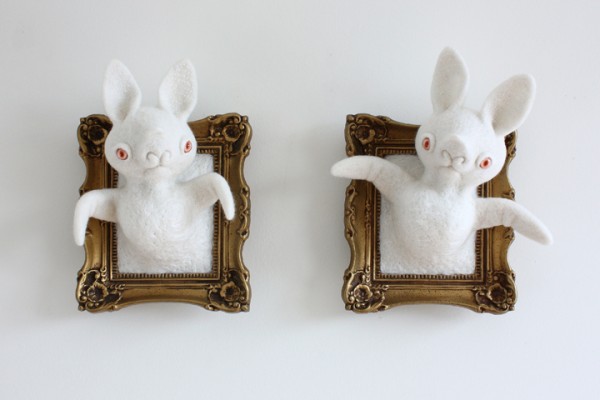Needle felting, a delightful craft blending creativity and skill, turns wool into intricate art pieces. Central to this transformative process are needle felting needles. This guide delves into the world of these needles, helping both novices and seasoned crafters make informed choices.

Understanding Needle Felting Needles
Materials Used in Making Felting Needles
The material of a felting needle significantly impacts its performance. Most needles are crafted from high-quality carbon or stainless steel, offering strength and durability. Carbon steel needles are known for their sharpness and rigidity, making them ideal for detailed work. Stainless steel needles, on the other hand, resist rust and are preferred in humid climates.
Understanding Needle Sizes
Needle sizes in felting are denoted by gauge numbers. The gauge number indicates the diameter of the needle: the higher the number, the finer the needle. For example, a 36-gauge needle is thicker and ideal for starting a project, while a 40-gauge needle is finer, suitable for detailed work.

Types of Needle Points
- Triangle Needles: These have three edges and are commonly used for general felting. They come in various gauges for different stages of felting.
- Star Needles: With more edges than triangle needles, star needles felt faster and are effective for joining pieces.
- Twisted Needles: These needles have a twisted design, enhancing their felting capabilities. They’re great for detailed work and give a smoother finish.
- Crown Needles: Featuring barbs only at the tip, crown needles are used for delicate surface work where minimal fiber disturbance is desired.
The Role of Barbs in Felting Needles
Barbs are the tiny notches along a felting needle’s shaft. They catch the wool fibers and tangle them together when the needle is poked into the wool. The number, position, and design of these barbs vary among different needle types, affecting how the needle felts the wool.
Choosing the Right Needle for Specific Tasks
- Coarse Wool and Fast Felting: A larger gauge needle (like 32 or 36) works best for coarse wool or when quick felting is desired.
- Detailing and Fine Wool: Finer gauges (like 40 or 42) are perfect for detailed work and fine wool textures.
- Blending Colors or Adding Top Layers: Medium gauge needles (like 38) strike a balance between coarse and fine, ideal for color blending and adding top layers without over-felting.
Understanding these nuances ensures that crafters can select the most appropriate needle for their specific felting project, leading to better results and a more enjoyable felting experience.

The Technique Behind Needle Felting
Basic Felting Techniques
For beginners, mastering basic techniques is key. This includes understanding how to hold the needle and apply the right amount of pressure.
Advanced Felting Methods
Experienced felters can explore advanced techniques such as 3D shaping or blending colours for more intricate designs.
Common Mistakes and How to Avoid Them
From breaking needles to uneven felting, learning to avoid common pitfalls enhances the crafting experience.

Tools and Materials for Needle Felting
Essential Tools Besides Needles
Alongside needles, tools like foam pads, finger guards, and wool blends are integral to felting. Each plays a unique role in the crafting process. This post gives you our list of great tools for needle felting.
Selecting the Right Wool Roving
Wool roving quality is paramount. The type of wool chosen—be it Merino, Corriedale, or another—impacts the final texture and appearance of the project.
Additional Supplies for Advanced Projects
For those venturing into complex projects, additional supplies like wire frames, special barbed needles, and multi-needle tools can be invaluable.

Step-by-Step Guide to Needle Felting
Starting Your First Project
Beginners should start with simple shapes like balls or flat pieces to get a feel for the technique and tools.
Tips for Beginners
Patience and practice are key. Start with basic shapes and gradually move to more complex designs as skills develop.
Creating Complex Shapes and Figures
For advanced crafters, creating complex shapes and figures involves understanding advanced needle manipulation and wool layering techniques.

Needle Felting Projects and Ideas
Simple Projects for Beginners
Easy projects like coasters or small animals are great for honing basic skills and building confidence.
Intermediate Projects to Try
Once comfortable, intermediate projects like detailed animals or floral designs can be attempted.
Advanced Projects for Experienced Felters
Challenging projects, such as realistic animals or large-scale art pieces, require a deep understanding of felting techniques and materials.
Maintenance and Care of Felting Needles
Cleaning and Storing Your Needles
Proper maintenance includes regular cleaning and safe storage to prevent rusting and breakage.
When to Replace a Felting Needle
Understanding when to replace a needle is crucial. Signs include bluntness, bending, or breakage.

The World of Needle Felting Artists
Highlighting Notable Artists and Their Work
Exploring the work of accomplished needle felting artists can provide inspiration and insight into the craft’s potential.
Discover Needle Felting Artists

Troubleshooting Common Needle Felting Issues
Dealing with Broken Needles
Broken needles are a common issue. Learning the right technique and how to avoid forcing the needle can reduce breakage.
Resolving Felting Inconsistencies
Inconsistencies in felting often arise from uneven pressure or inconsistent wool layering. Practice and attention to detail can help overcome these challenges.

FAQs on Needle Felting Needles
Can I Use a Regular Needle for Needle Felting?
Regular sewing needles are not suitable for felting. Felting needles have barbs that tangle the wool fibres effectively. Hit that link above for our deep dive into this topic.
How Many Needles Should I Use at Once?
Using multiple needles can speed up the process but requires skill. Beginners should start with a single needle.
What Are the Best Needles for Thick Wool?
For thick wool, coarser needles are generally more effective. They can felt large areas more quickly and handle the density of the wool.
Can I Use a Regular Needle for Needle Felting?
Conclusion
Needle felting is an art form that marries creativity with technique, and the choice of needles is central to this craft.
Whether you’re a beginner or an experienced felter, understanding the various types of needles, their sizes, shapes, and materials, as well as their maintenance and care, will enhance your felting experience. Embark on this fascinating journey, experiment with different techniques, and let your creativity flourish.



